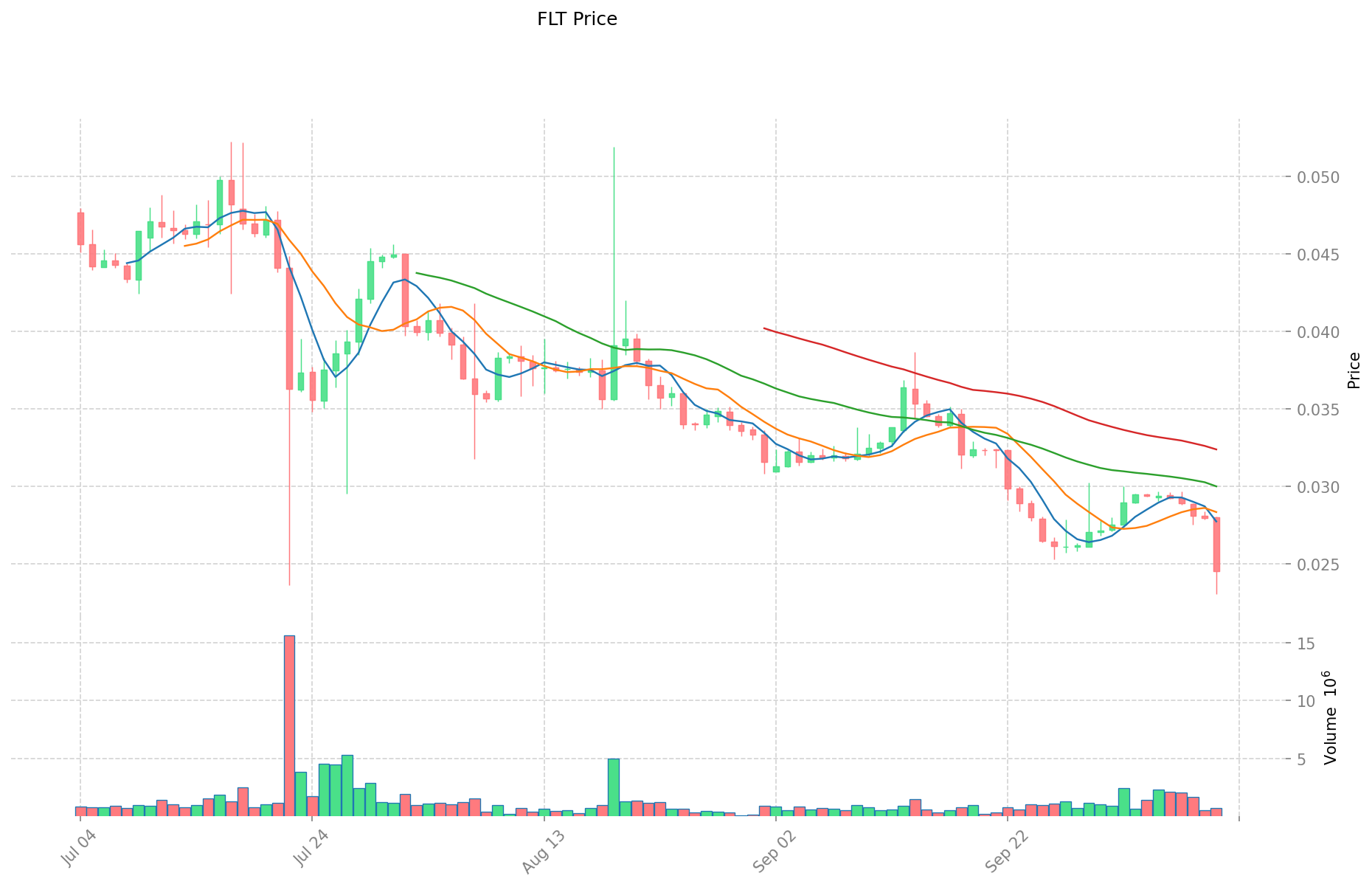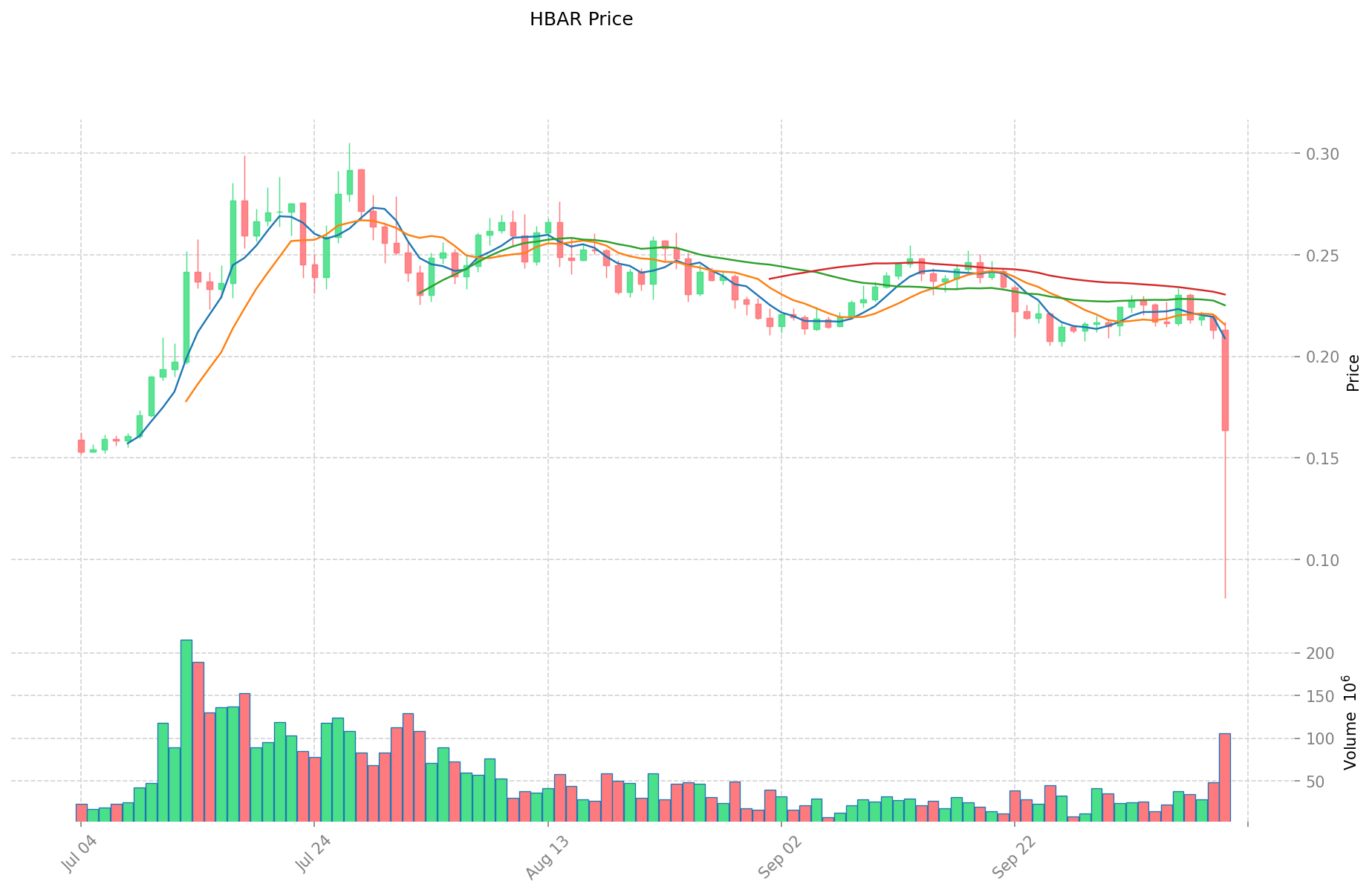FLT vs HBAR: A Comparative Analysis of Two Emerging Cryptocurrencies
Introduction: Investment Comparison of FLT vs HBAR
In the cryptocurrency market, the comparison between Fluence (FLT) vs Hedera (HBAR) has always been a topic that investors cannot avoid. The two not only have significant differences in market cap ranking, application scenarios, and price performance, but also represent different positions in crypto assets.
Fluence (FLT): Since its launch, it has gained market recognition for its position as the first decentralized "Cloudless" computing platform.
Hedera (HBAR): Since its inception in 2019, it has been hailed as a fast, secure, and fair public ledger network, and is one of the cryptocurrencies with high global trading volume and market capitalization.
This article will comprehensively analyze the investment value comparison between FLT and HBAR, focusing on historical price trends, supply mechanisms, institutional adoption, technological ecosystems, and future predictions, and attempt to answer the question that investors care about most:
"Which is the better buy right now?" Here is the analysis based on the provided template and information:
I. Price History Comparison and Current Market Status
FLT and HBAR Historical Price Trends
- 2024: FLT reached its all-time high of $1.55 on March 25, 2024, likely due to significant project developments.
- 2021: HBAR hit its all-time high of $0.569229 on September 15, 2021, possibly influenced by increased adoption or partnerships.
- Comparative analysis: In the recent market cycle, FLT has fallen from its high of $1.55 to a current price of $0.02462, while HBAR has shown more stability, currently trading at $0.16452.
Current Market Situation (2025-10-11)
- FLT current price: $0.02462
- HBAR current price: $0.16452
- 24-hour trading volume: FLT $20,217.71 vs HBAR $19,483,016.54
- Market Sentiment Index (Fear & Greed Index): 64 (Greed)
Click to view real-time prices:
- View FLT current price Market Price
- View HBAR current price Market Price


II. Core Factors Influencing the Investment Value of FLT vs HBAR
Supply Mechanism Comparison (Tokenomics)
- HBAR: Has a more stable price volatility pattern, making it suitable for long-term fundamental analysis
- FLT: Shows potential through its innovative applications
- 📌 Historical Pattern: Supply mechanisms drive price cycles with HODLers focusing on long-term fundamentals while short-term traders capitalize on volatility
Institutional Adoption and Market Applications
- Institutional Holdings: Limited information available from the provided context
- Enterprise Adoption: HBAR offers good returns due to its volatility characteristics
- Regulatory Attitudes: Information not specified in the provided context
Technical Development and Ecosystem Building
- HBAR Technical Upgrades: May 2023 technical community call featured developer insights and new tools
- FLT Technical Development: Information not specified in the provided context
- Ecosystem Comparison: HBAR has ongoing development activities with community engagement through technical calls
Macroeconomic Factors and Market Cycles
- Performance in Inflationary Environments: Information not specified in the provided context
- Macroeconomic Monetary Policy: Information not specified in the provided context
- Geopolitical Factors: Information not specified in the provided context
III. 2025-2030 Price Prediction: FLT vs HBAR
Short-term Prediction (2025)
- FLT: Conservative $0.0235 - $0.0245 | Optimistic $0.0245 - $0.0296
- HBAR: Conservative $0.0930 - $0.1632 | Optimistic $0.1632 - $0.1943
Mid-term Prediction (2027)
- FLT may enter a growth phase, with projected prices of $0.0151 - $0.0387
- HBAR may enter a consolidation phase, with projected prices of $0.1957 - $0.2297
- Key drivers: Institutional fund inflows, ETFs, ecosystem development
Long-term Prediction (2030)
- FLT: Base scenario $0.0292 - $0.0392 | Optimistic scenario $0.0392 - $0.0474
- HBAR: Base scenario $0.2114 - $0.3155 | Optimistic scenario $0.3155 - $0.4416
Disclaimer: This analysis is based on historical data and market projections. Cryptocurrency markets are highly volatile and unpredictable. This information should not be considered as financial advice. Always conduct your own research before making investment decisions.
FLT:
| 年份 | 预测最高价 | 预测平均价格 | 预测最低价 | 涨跌幅 |
|---|---|---|---|---|
| 2025 | 0.0296329 | 0.02449 | 0.0235104 | 0 |
| 2026 | 0.028685137 | 0.02706145 | 0.0148837975 | 9 |
| 2027 | 0.038743877965 | 0.0278732935 | 0.01505157849 | 13 |
| 2028 | 0.03797178773505 | 0.0333085857325 | 0.028312297872625 | 35 |
| 2029 | 0.04276822408053 | 0.035640186733775 | 0.024235326978967 | 44 |
| 2030 | 0.047437088542654 | 0.039204205407152 | 0.029011112001292 | 59 |
HBAR:
| 年份 | 预测最高价 | 预测平均价格 | 预测最低价 | 涨跌幅 |
|---|---|---|---|---|
| 2025 | 0.1942556 | 0.16324 | 0.0930468 | -2 |
| 2026 | 0.246671964 | 0.1787478 | 0.137635806 | 6 |
| 2027 | 0.22972667256 | 0.212709882 | 0.19569309144 | 26 |
| 2028 | 0.3274030503744 | 0.22121827728 | 0.199096449552 | 31 |
| 2029 | 0.35660386297536 | 0.2743106638272 | 0.186531251402496 | 63 |
| 2030 | 0.441640168761792 | 0.31545726340128 | 0.211356366478857 | 88 |
IV. Investment Strategy Comparison: FLT vs HBAR
Long-term vs Short-term Investment Strategies
- FLT: Suitable for investors focused on innovative decentralized computing platforms
- HBAR: Suitable for investors seeking stability and established enterprise adoption
Risk Management and Asset Allocation
- Conservative investors: FLT: 20% vs HBAR: 80%
- Aggressive investors: FLT: 40% vs HBAR: 60%
- Hedging tools: Stablecoin allocation, options, cross-currency portfolios
V. Potential Risk Comparison
Market Risk
- FLT: Higher volatility and lower trading volume may lead to liquidity issues
- HBAR: More stable but still subject to overall crypto market trends
Technical Risk
- FLT: Scalability, network stability
- HBAR: Centralization concerns, potential security vulnerabilities
Regulatory Risk
- Global regulatory policies may have different impacts on both assets
VI. Conclusion: Which Is the Better Buy?
📌 Investment Value Summary:
- FLT advantages: Innovative "Cloudless" computing platform, potential for high growth
- HBAR advantages: Established network, higher trading volume, more stable price history
✅ Investment Advice:
- Novice investors: Consider a higher allocation to HBAR for stability
- Experienced investors: Balanced approach with both FLT and HBAR based on risk tolerance
- Institutional investors: Evaluate HBAR for its established network and FLT for potential growth opportunities
⚠️ Risk Warning: The cryptocurrency market is highly volatile. This article does not constitute investment advice. None
VII. FAQ
Q1: What are the main differences between FLT and HBAR? A: FLT is a decentralized "Cloudless" computing platform, while HBAR is a fast, secure public ledger network. HBAR has a higher market cap, trading volume, and more stable price history compared to FLT.
Q2: Which cryptocurrency has shown better price performance recently? A: HBAR has shown more price stability recently. As of 2025-10-11, HBAR is trading at $0.16452, while FLT is at $0.02462, having fallen significantly from its all-time high of $1.55 in March 2024.
Q3: How do the supply mechanisms of FLT and HBAR compare? A: HBAR has a more stable price volatility pattern, making it suitable for long-term fundamental analysis. FLT's supply mechanism details are not specified in the provided context, but it shows potential through innovative applications.
Q4: What are the projected prices for FLT and HBAR in 2030? A: For FLT, the base scenario projects $0.0292 - $0.0392, with an optimistic scenario of $0.0392 - $0.0474. For HBAR, the base scenario projects $0.2114 - $0.3155, with an optimistic scenario of $0.3155 - $0.4416.
Q5: How should investors allocate their portfolio between FLT and HBAR? A: Conservative investors might consider 20% FLT and 80% HBAR, while aggressive investors might opt for 40% FLT and 60% HBAR. The exact allocation should be based on individual risk tolerance and investment goals.
Q6: What are the main risks associated with investing in FLT and HBAR? A: FLT faces higher volatility and potential liquidity issues due to lower trading volume. HBAR, while more stable, may have centralization concerns. Both are subject to overall crypto market trends and regulatory risks.
Share
Content